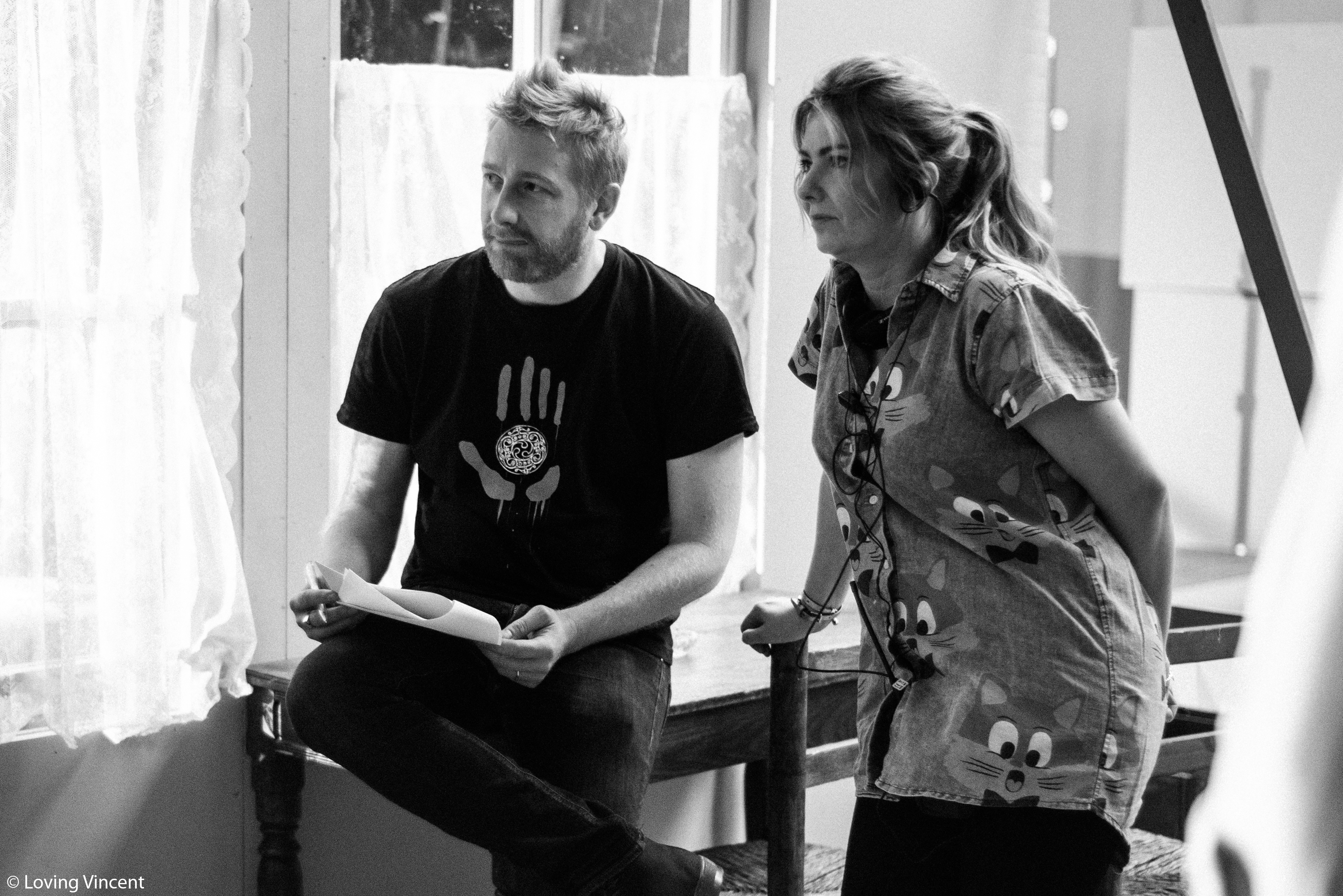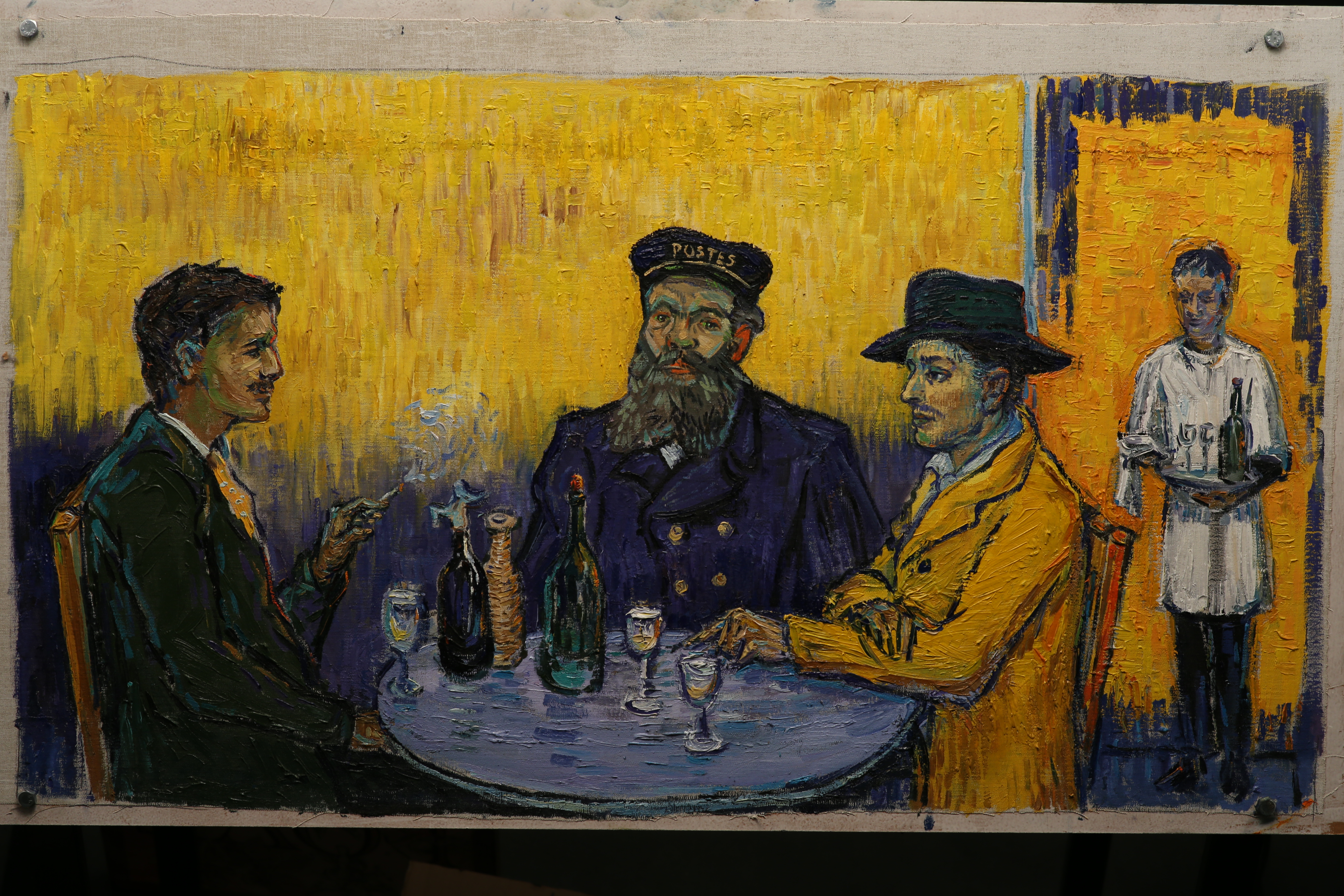Loving Vincent first entered development in 2008, originally conceived as a short film by Dorota Kobiela. Since then the script has gone through several major drafts and changes in direction before settling on the final version, which tells the story from the point of view of Armand Roulin. Here are few words from writer-director duo Dorota Kobiela and Hugh Welchman at various points in the journey.

Hugh Welchman and Dorota Kobiela
Dorota Kobiela - the early drafts
By far the hardest challenge was re-writing the script as an 80 minute film. I see myself as a director, not a writer. I couldn’t just write a biopic like Lust for Life, I could only have scenes that were set in or at least started or finished in Vincent paintings. I would often write scenes that I thought were beautiful and moved the story forward, and then realise they were too removed from the paintings.

Kirk Douglas as Van Gogh in Lust for Life
I wrote the first draft in Polish, based on my various short scripts, and using character monologues we had commissioned from a Polish novelist, Jacek Dehnal. I wrote the second draft in Polish as well, and it was so time consuming getting it translated, and getting notes in English, so, seeing as we were going to shoot the film in English, I decided I would write future drafts in English. So at this point I drafted in the help of Hugh and co-opted him as my co-writer. Over the next 2 and a half years we produced 5 full new drafts, and many minor revisions to those 5 drafts, and we had two complete changes of direction during this time.
I wrote many stories: stories taken from Vincent’s life; stories that started from particular paintings; stories exclusively from his Dutch period; stories when he was deep in the bohemia of Mountmartre in Paris. But the first concrete script that emerged was set during his last days. This resonated, and also I loved the paintings involved, and the fact they included paintings of people who he had regular contact with at the end: the mercurial Dr Gachet; his mysterious daughter, Marguerite Gachet, painted three times, yet her face always concealed; and the spirited daughter of the owner of the Inn where Vincent died, Adeline Ravoux.
Hugh Welchman and Dorota Kobiela working on a draft of the script in Amsterdam.
Hugh Welchman on developing the story
We had read around 40 different publications about Vincent: biographies, academic, essays and fictional works. Over 4 years we visited 19 museums in 6 countries to view around 400 Van Gogh paintings. We also watched the major feature film and documentary productions about his life and interviewed experts at the Van Gogh Museum.
The demands of writing a script on Vincent were tough. We took as our mantra his words in one of his last letters: “We cannot speak other than by our paintings”. So we showed only what we see in his paintings. With that restriction we had many paths to follow: Vincent’s struggle; the mystery of his death; the development of his art; or an alchemy of the aforementioned.
For us it was very clear that Vincent was not insane. The story shouldn’t be about his madness, it should be sheer bewildering shock at the journey he went on and what he accomplished in 8 short years. But we also had to deal with the widely held perception that he was some tortured mad suffering artist.

Vincent in the final film
New directions - Dorota
A major change of direction was the change from a mockumentary to a regular dramatic story. For the first draft we had the unseen film-maker as the driving force of the investigation into Vincent’s life through interviews with his paintings. We also made the stylistic choice to have two different visual styles in the film- the interviews would be in Vincent style, and the recollections of the people being interviewed would be in black and white.
One draft had Postman Roulin and his son narrating events to a third party, the painter Edvard Munch. They had looked into Vincent’s death, and now they were recounting this investigation to a painter who had come south in Vincent’s footsteps.

An early test painting with the Roulins and Edvard Munch.
We felt this was still too removed and we needed to identify more closely with the emotional journey of the main characters. So then we shifted to setting the investigation in the present, and made Armand Roulin the hero, interviewing people in Auvers, Paris and Arles.




